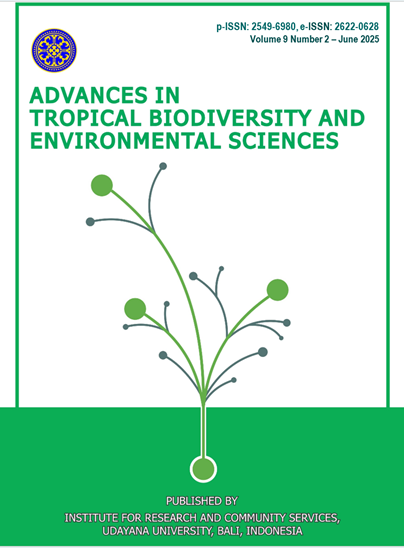Reproductive Aspects of Red Devil Fish (Amphilophus citrinellus) in Lake Batur Area, Bali
DOI:
https://doi.org/10.24843/ATBES.2025.v09.i02.p10Abstract
The red devil fish (Amphilophus citrinellus) has a rapid breeding nature; its presence is a problem and detrimental to fish farmers. This study aims to examine the reproductive aspects of the fish, which can be seen from several elements: sex ratio, gonad maturity level, gonad maturity index, and fecundity. The research method used is descriptive quantitative. Samples of red devil fish (Amphilophus citrinellus) were collected using purposive sampling at three sampling station locations. We conducted the sampling three times, every two weeks. Each sample collection consisted of 15 fish per station. The equipment used was a gill net with a mesh size of 2.5 inches, a net length of 100 m, and a net height of 1 m. We then place the caught fish into a coolbox and observe them. The research results indicate an imbalance in the sex ratio of the red devil fish population in Lake Batur. The male red devil fish population is larger than the female population. Based on the gonad maturity level (TKG), male red devil fish are most commonly found at TKG III and II, each having 20 individuals, while females are dominated by TKG IV, which has 35 individuals. The average gonad maturity index (IKG) for male fish is 0.25–0.65, while for females, it is 1.58–2.32. The average fecundity of females ranges from 582 to 790 eggs.
Downloads
Published
How to Cite
License
Copyright (c) 2025 Advances in Tropical Biodiversity and Environmental Sciences

This work is licensed under a Creative Commons Attribution-ShareAlike 4.0 International License.










